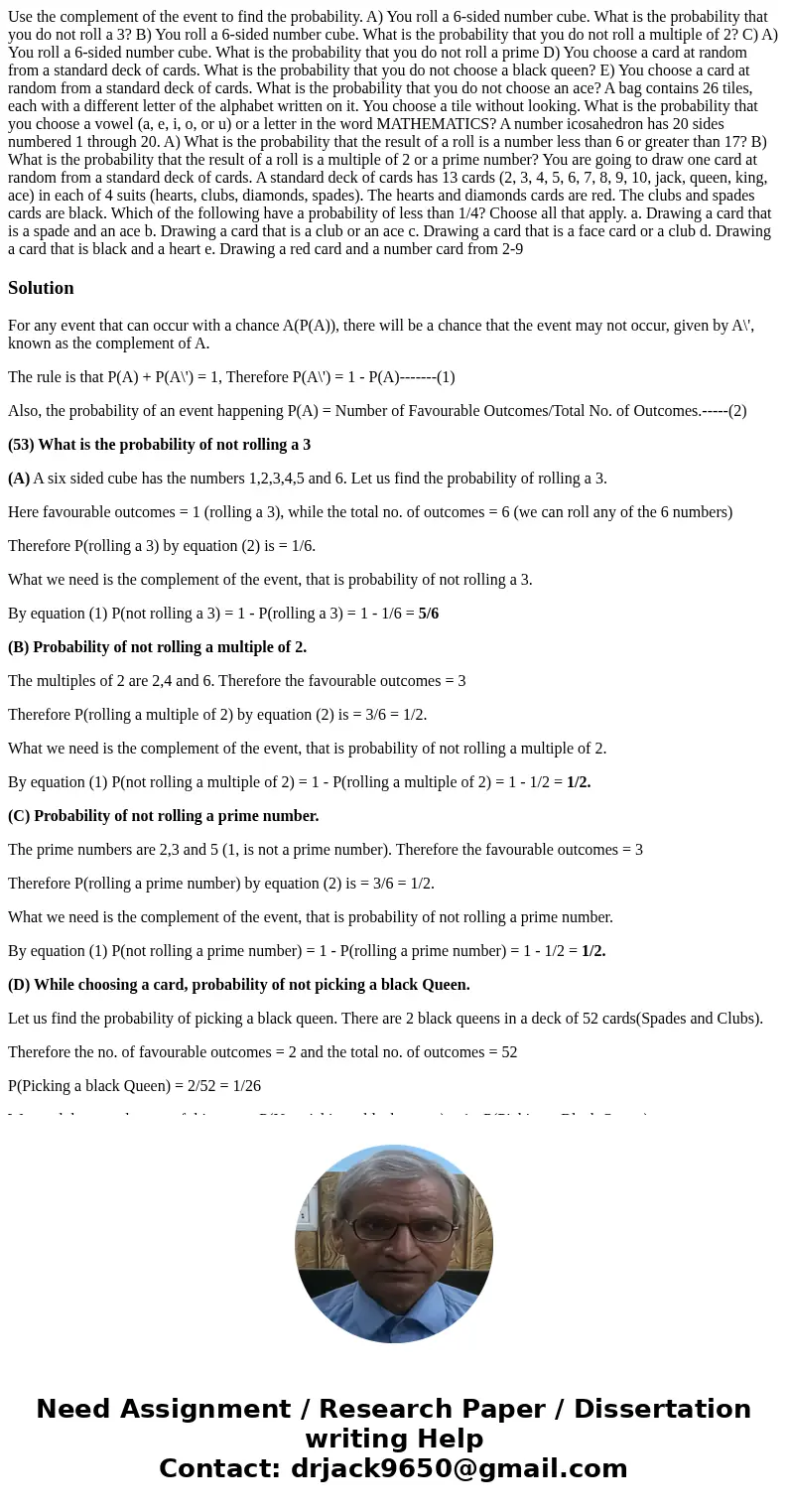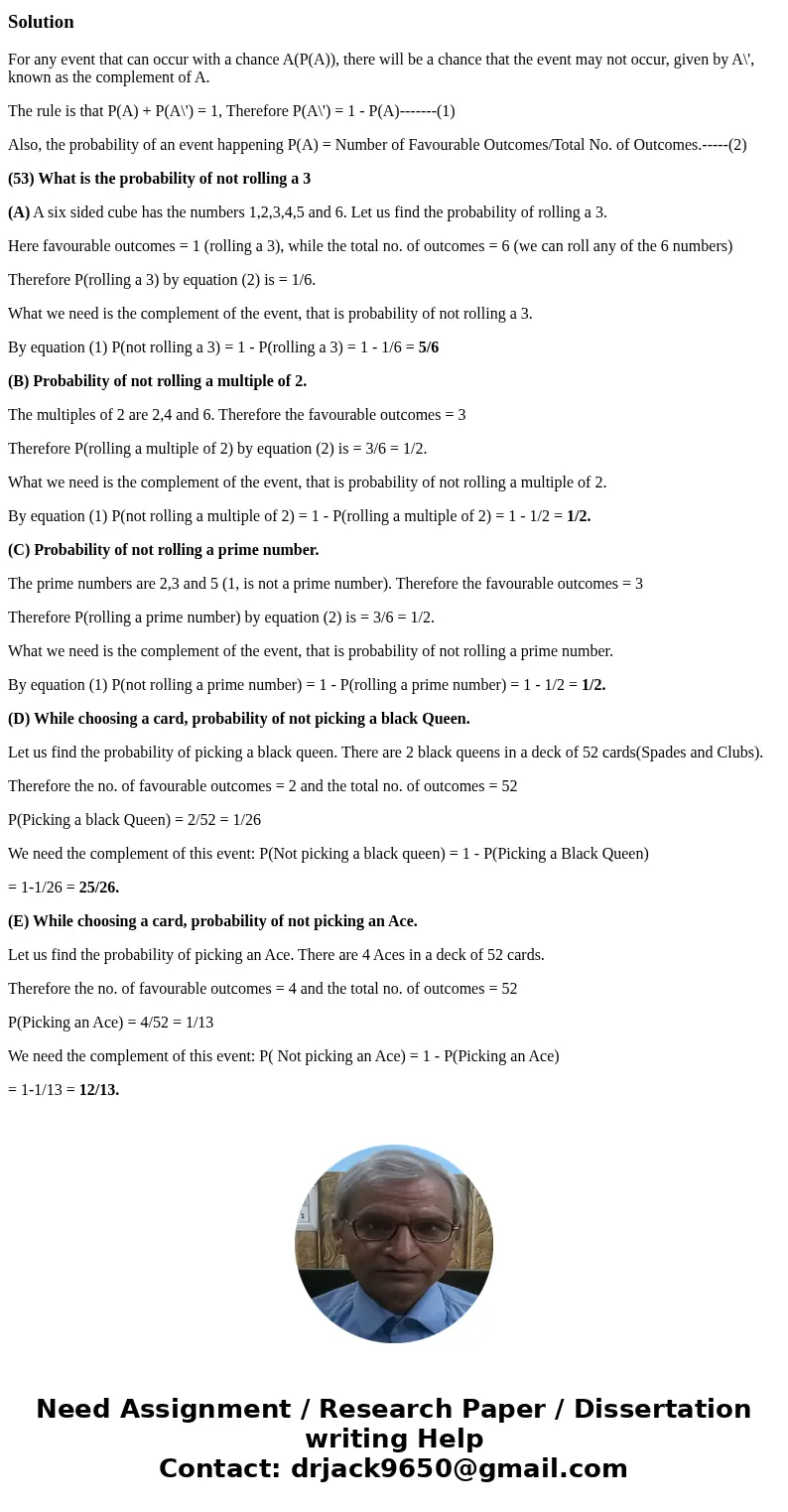Use the complement of the event to find the probability A Yo
Solution
For any event that can occur with a chance A(P(A)), there will be a chance that the event may not occur, given by A\', known as the complement of A.
The rule is that P(A) + P(A\') = 1, Therefore P(A\') = 1 - P(A)-------(1)
Also, the probability of an event happening P(A) = Number of Favourable Outcomes/Total No. of Outcomes.-----(2)
(53) What is the probability of not rolling a 3
(A) A six sided cube has the numbers 1,2,3,4,5 and 6. Let us find the probability of rolling a 3.
Here favourable outcomes = 1 (rolling a 3), while the total no. of outcomes = 6 (we can roll any of the 6 numbers)
Therefore P(rolling a 3) by equation (2) is = 1/6.
What we need is the complement of the event, that is probability of not rolling a 3.
By equation (1) P(not rolling a 3) = 1 - P(rolling a 3) = 1 - 1/6 = 5/6
(B) Probability of not rolling a multiple of 2.
The multiples of 2 are 2,4 and 6. Therefore the favourable outcomes = 3
Therefore P(rolling a multiple of 2) by equation (2) is = 3/6 = 1/2.
What we need is the complement of the event, that is probability of not rolling a multiple of 2.
By equation (1) P(not rolling a multiple of 2) = 1 - P(rolling a multiple of 2) = 1 - 1/2 = 1/2.
(C) Probability of not rolling a prime number.
The prime numbers are 2,3 and 5 (1, is not a prime number). Therefore the favourable outcomes = 3
Therefore P(rolling a prime number) by equation (2) is = 3/6 = 1/2.
What we need is the complement of the event, that is probability of not rolling a prime number.
By equation (1) P(not rolling a prime number) = 1 - P(rolling a prime number) = 1 - 1/2 = 1/2.
(D) While choosing a card, probability of not picking a black Queen.
Let us find the probability of picking a black queen. There are 2 black queens in a deck of 52 cards(Spades and Clubs).
Therefore the no. of favourable outcomes = 2 and the total no. of outcomes = 52
P(Picking a black Queen) = 2/52 = 1/26
We need the complement of this event: P(Not picking a black queen) = 1 - P(Picking a Black Queen)
= 1-1/26 = 25/26.
(E) While choosing a card, probability of not picking an Ace.
Let us find the probability of picking an Ace. There are 4 Aces in a deck of 52 cards.
Therefore the no. of favourable outcomes = 4 and the total no. of outcomes = 52
P(Picking an Ace) = 4/52 = 1/13
We need the complement of this event: P( Not picking an Ace) = 1 - P(Picking an Ace)
= 1-1/13 = 12/13.


 Homework Sourse
Homework Sourse